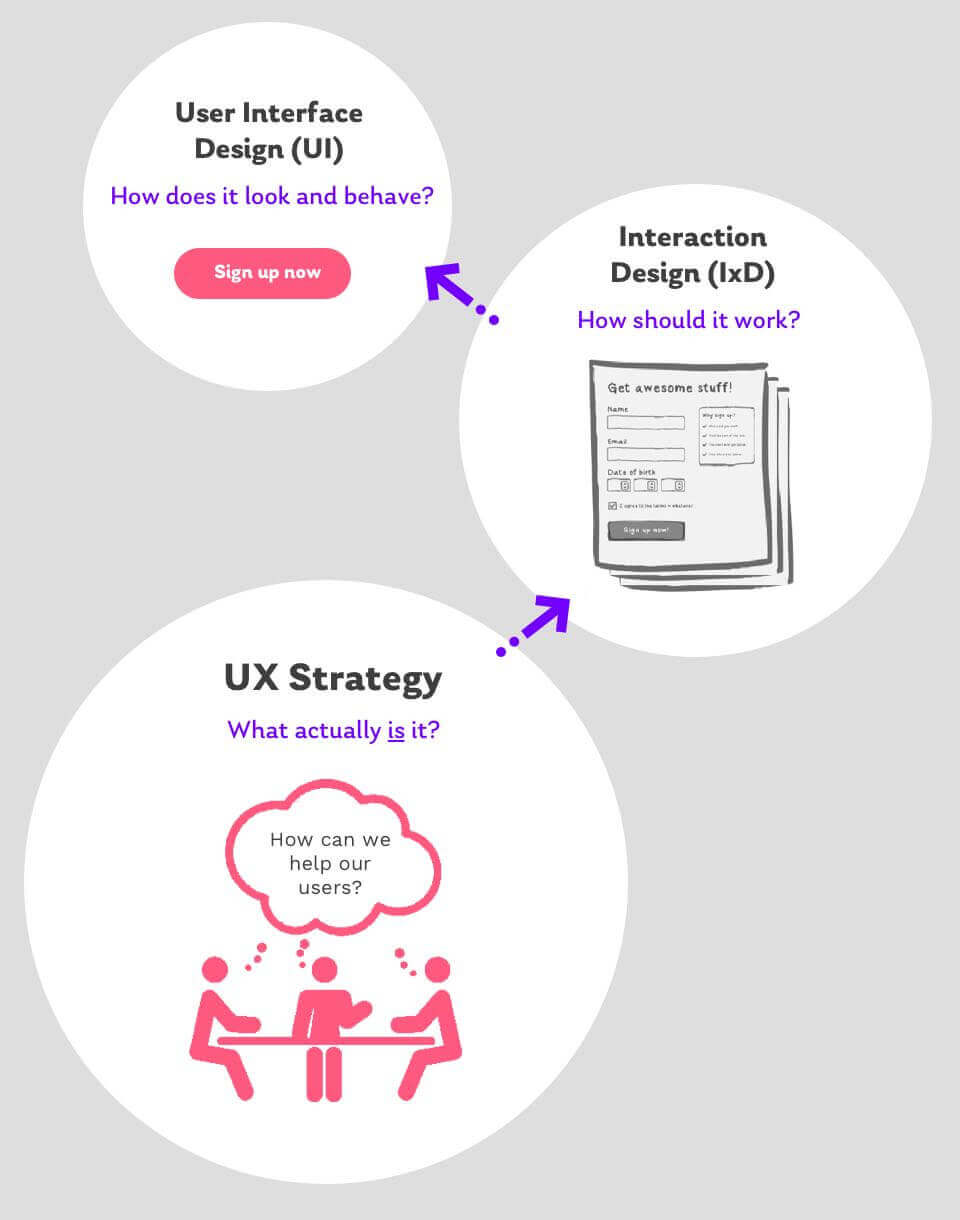Blog The value of UX strategy
There’s a lot more to design than just the user interface. We need to think holistically to create the best experiences.
We’ve worked on many digital design projects over the years. They’ve taken on many shapes and sizes, but always have one thing in common.
They all start with a brief. A brief is a description of a project’s aims and objectives. It’s usually given to the designers when they start work. It tells them what they’re working towards.
Some briefs are open. They allow the designers to shape the solution themselves, based on their experience. Other briefs are more prescriptive. They mandate the flows and functions that need to be put together. In this second case, it’s basically the designer’s job to visualise a predetermined solution.
Whatever the nature of brief, it’s actually quite rare that a designer is involved when it is written. And that’s a real shame.
Why plan a UX strategy?
UX design isn’t just about pushing pixels. As part of the design process, we’re gathering a whole bunch of insight. About both the end-user and also the business goals.
Through their research and exploration, designers learn first-hand what works and what doesn’t. They gain an understanding of the problem area, and figure out what makes everybody tick.
This insight gathered during the design process shouldn’t just determine what goes on the screen. It can answer more fundamental questions, too. This information can steer the direction of a project, and sometimes (in the case of a tech startup) even the whole business.

Design decisions = business decisions
Let’s say you’re designing a new app. You’ve worked to the original brief, and have taken an early prototype into user testing.
During this testing, you may find that people don’t enjoy the overall concept. It just isn’t useful to them. This issue hasn’t got anything to do with the interface, the workflows, or any unclear messaging. The problem is with the fundamental vision of the product.
We have experienced this scenario on several occasions. A client can put us to work building something that, as it happens, users don’t actually need. It could still be addressing a valid problem space, but the solution is all wrong.
This can’t be fixed by just moving pixels around, or making prettier layouts. In these cases we’ve got to revisit exactly what the thing we’re making is. Whether the business is open to being challenged like this… That’s another story.
To fail is to learn
A failed design can be a great thing. The nature of the design process permits feedback early and often. If we realise our solution is on the wrong track, we do so quickly using tools like wireframe prototypes and usability testing.
When something fails, we understand why. We can take that insight back to the business, and suggest something different. Using our design insights to inform business decisions, shaping the future of the projects we work on.
We should always try to avoid prescriptive, pre-determined briefs and instead use design to set the vision of our products. Across the business world, designers are gaining more seats at the table.
This is especially true in the tech industry. Successful companies like Apple, AirBnb & Uber pride themselves on design-led thinking. Their designers are being empowered to define briefs instead of just following them.
InVision’s amazing documentary Design Disruptors focuses on this very notion. They stress that today’s most disruptive companies have a new guiding principle: a fierce focus on customer-centric product design.
Earn a seat at the table
Getting this kind of C-suite recognition doesn’t happen overnight. It’s something you need to work towards. Share your work. Show your clients and bosses the value of user insight and rapid iteration. Show them how much money is saved when we test ideas quickly and fail fast.
When you’re given a brief that isn’t quite right, prototype it anyway. But do it quickly. Test that solution. Play your findings back to the business. If the idea doesn’t work you can now show them why, instead of just nagging them.
Be open. By sharing, you’ll earn the trust of your leaders. Get them to recognise the value of design insight, and plan better products going forward.
Chris Myhill
— Director of Experience